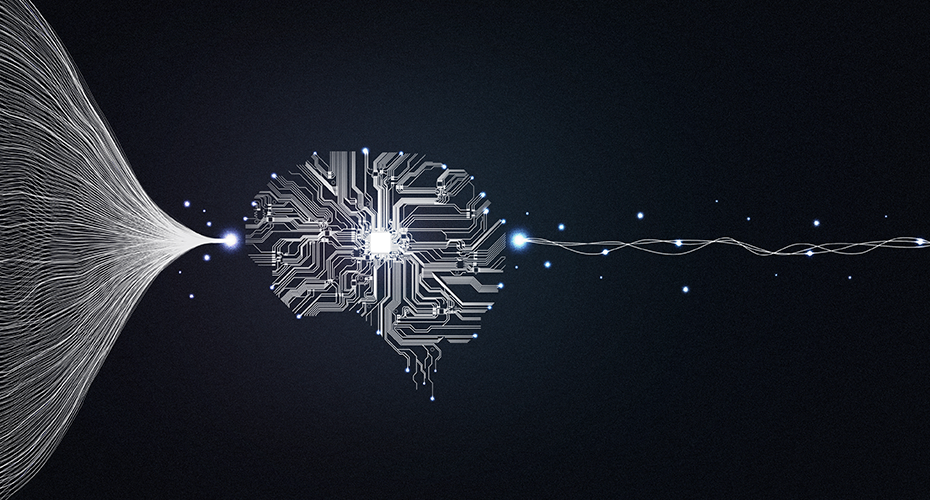
4 Stages of Corporate Digital Readiness: Where Does Your Company Fall?

Being able to continue advancing IT organizations is a never ending battle. With decades of complexity and the high cost to support legacy systems, converting much of the Gartner projected $3.8 trillion worldwide IT spend will be used to aid companies moving to more flexible and agile infrastructures.
John-David Lovelock, research vice president at Gartner states, “As enterprises continue their digital transformation efforts, shifting to ‘pay for use’ will continue. This sets enterprises up to deal with the sustained and rapid change that underscores digital business.”
Conducting and managing a digital business poses challenges, especially if the business is still relying on legacy systems like Mainframes or AS400s to maintain the speed and agility of the current generation products and software. However, businesses have started adopting new digital assets that can be leveraged to maintain an agile and adaptable IT organization.
We have qualified that companies typically fall into 1 of 4 stages as they work to modernize their legacy systems. These four are distinguished between the varying stages of development and bottlenecks that delay the process.
Stage 1: Transforming entire organizational systems, both products and processes
Customers in this stage are behind in technology innovation and need to perform significant changes in order to stay relevant in today’s competitive landscape. To benefit their business, rather than immediately attempt to upgrade hardware or move to the cloud, customers in this stage should step back to understand their end users and customer-facing systems.
By creating customer-facing journeys and understanding the interactions that users have with the relative customer-facing systems, IT organizations can garner insights needed to optimize the way their businesses operate today.
For example, in the past a customer would walk into a brick and mortar store to shop for an item, pay for the item at the register and walk out the door with their new purchase. Today, that very same customer today may opt to visit a store’s website, shop for an item online by using keyword searches, determine if the right size, color or item is available, and may even opt to save the item to purchase later.
By understanding the customer journey holistically, the business will uncover the sequences required to provide an optimal shopping experience. Journeys will provide the business with valuable insights to make an informed digital transformation in the most efficient timeframe.
The journey in the example will help to align IT with business on where to start to perform the internal overhaul. By determining how these interactions impact their technology systems, IT can prioritize to accomplish the backlog of system improvements.
Stage 2: Strategically replacing applications, based on their criticality and visibility, and moving them onto newer platforms or technology stack
Customers may have the framework laid out to be innovative and transformative. However, they will not be ready to undertake a massive overhaul of their operating systems as it might disrupt their day to day operations. Business units should be able to take a pragmatic view of their systems and strategically prepare to replace applications with better alternatives that are critical for their business continuity without incurring a disruptive impact.
Further, once insights are garnered from the customer journey, the business can take a deep dive into determining which of the current applications are better suited in progressing towards realizing a holistic experience. Business units can determine the sequence of replacements of critical and supporting applications with leading industry products or processes. For example, omni-channel, SEO, and fulfillment experience can be prioritized over in-store or returns processing experience, loyalty programs can be prioritized over promotional offers.
Considerations like application integration, agility, sustainability and maintenance must all be measured. Better collaboration between various business units and support structures through tools and processes have to be considered as well during the selection of alternative products and processes.
Stage 3: Improving the performance of the existing systems through re-architecture
Some business models are so unique that it is difficult to transform their business into an existing ERP platform. Businesses tend to operate with the mindset that their success is because of their product line and services, which may or may not be true.
Software and systems may all be in place and optimally performing, but not cohesively. While little to no change may be required, exponential gains will be realized through re-architecture. By breaking down the walls and silos that exist between business units, operations will begin to function as one system, transmitting the necessary data and providing a seamless end-user experience for the customer.
For example, an insight into the volume of lost sales or abandoned sales due to low response time across the ordering channels, customer support personnel’s ability to view the order details and address the customer concerns, will help the business to address the actual root cause by diverting the efforts in the right direction. Re-architecting the current processes and systems can be looked at as a potential option to address these situations when the opportunity to replace is not viable
Stage 4: Pure maintenance mode with small enhancements
This is where an IT organization becomes complacent with their systems. They are keeping the lights on with minimal innovation. IT believes that their current systems and architecture, however ancient they are, provide the necessary capabilities to allow the business to function. They may be resistant to change and concerned about the impact it will have on current operations. These companies lean towards draining out any mileage that might be obtained from the existing systems, ignoring the fact that this short sightedness doesn’t help the company in the long run. At this stage, most businesses are running at optimal performance with a few bumps along the way. Companies revert to short-term fixes of their current operations to continue business as usual.
Innovation is the key component to realizing and sustaining digital transformation. It impacts the entire organization, requires greater discipline to achieve, but even better returns on the investment. Today, digitization is paving the way for a hyperconnected experience internally and beyond.
Want to learn more about Apexon? Consult with an expert here.




